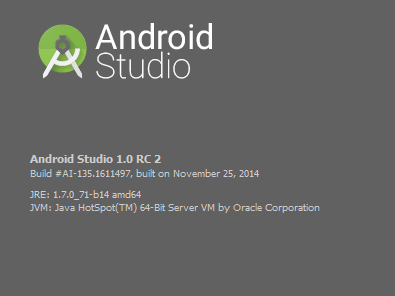Tag: android
-
Flutter: a Portable UI Framework for Mobile, Web, Embedded, and Desktop
Today marks an important milestone for the Flutter framework, as we expand our focus from mobile to incorporate a broader set of devices and form factors. View original article
-
Announcing Flutter Release Preview 1
Today, we’re delighted to announce Flutter Release Preview 1, signaling a new phase of development for Flutter as we move into the final stages of stabilization for 1.0. View original article
-
Implementing adaptive master-detail layouts in Flutter
Usually, when developing apps for mobile phones, having too much screen real estate is not the problem. In fact, quite the contrary. Much thought has to be put into how to structure the app so that it does not feel cluttered. On tablets, it is a whole different story. View original article
-
React Native App with Authentication and User Management in 15 Minutes
While React Native brings many efficiencies, it can also be complicated to work with when it comes to developing authentication and user management functions. View original article
-
Open-sourcing Litho, a declarative UI framework for Android
One challenge in Android development is achieving smooth UI performance. Developers can spend a lot of time optimizing, squeezing out every bit of speed from their UI code, and yet still experience lag and dropped frames in complex scenarios. View original article
-
NativeScript example, step by step, Windows 10
A tiny, 5 minute, tutorial on creating a new empty project using NativeScript + TypeScript, compiling it and running in Android.
-

tip: Volley comm library for android, available via Gradle
Previously, in order to use Volley, the only way was to add the “jar” file to the project – not anymore – official volley is now available, just change the app.gradle file:
-
Getting Started with NativeScript + TypeScript + Angular2 for Android and iOS app development
NativeScript is a cross-platform framework for building (almost) native apps using Javascript. I say almost as the the “Native” part is the UI part, that uses the native UI controls available in each platform, so no webviews anymore. This sounds like Titanium Appcelerator, but i’ll be giving it a try in the following days.
-
What’s New In The Upcoming Android 7.1 Nougat Dev Preview
While the Pixel phones are due to begin shipping later this month and come with Android 7.1 Nougat for the software, other devices which are scheduled to get it, such as the currently compatible Nexus devices that have Android 7.0 software, are still waiting on official releases. View original article
-
Cyanogen is done building its Android-based OS
Cyanogen has some bad news for fans of its Android-based OS: The company will no longer build its full-stack Android fork, which is available on phones from Alcatel, Wileyfox, BQ, Yu, ZUK and OnePlus. View original article
-
Realm Open Sources Mobile Database, Grows It into Enterprise Platform
Realm has fully open sourced its mobile database while adding an object server to offer a complete enterprise mobile platform. View original article
-
Download Android Apps with Source Code
Available at f-droid is a directory of open source android apps (full with source code). A great learning resource for beginners.
-
Keeping Android safe: Security enhancements in Nougat
Over the course of the summer, we previewed a variety of security enhancements in Android 7. View original article
-
Android Studio 2.2
Android Studio 2.2 is available to download today. Previewed at Google I/O 2016, Android Studio 2.2 is the latest release of our IDE used by millions of Android developers around the world. Packed with enhancements, this release has three major themes: speed, smarts, and Android platform support. View original article
-
Enable Developer Mode on the Samsung Galaxy S7 and Galaxy S7 Edge
Fancy yourself a developer? The developer mode is meant for experts, which is probably why the mode isn’t the easiest thing to turn on. Developer mode allows you access to many different functions of the phone that an average user would not ever need to use. View complete article
-
Android Marshmallow market share is growing, doubled last month
[et_pb_section admin_label=”section”] [et_pb_row admin_label=”row”] [et_pb_column type=”4_4″] [et_pb_text admin_label=”Text”] Android Marshmallow is finally getting some love. After taking four months to hit 1 percent adoption and following Lollipop finally assuming the Android crown, the latest version of Android was the only one to gain share this past month, according to Google’s Platform Versions page.
-
Open source ODB-II reader for Android
Available at https://github.com/pires/android-obd-reader
-

Android Studio 1.0 RC2 error: “Gradle DSL method not found: ‘runProguard()’”
After installing the RC2 upgrade (in my case i’ve upgraded directly from 0.8.something to 1.0 rc2) the following error could appear when reimporting/resyncing projects created with previous versions: Gradle DSL method not found: ‘runProguard()’